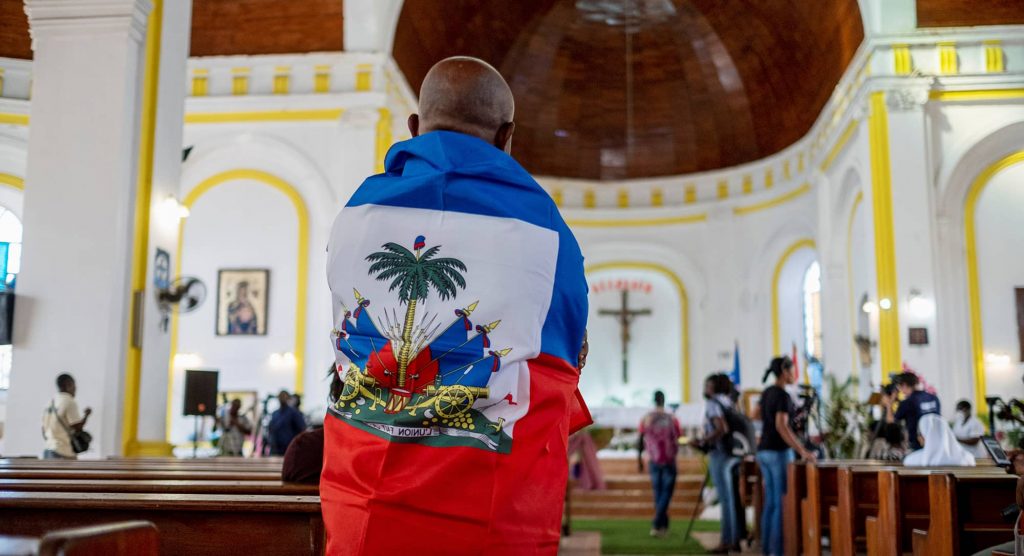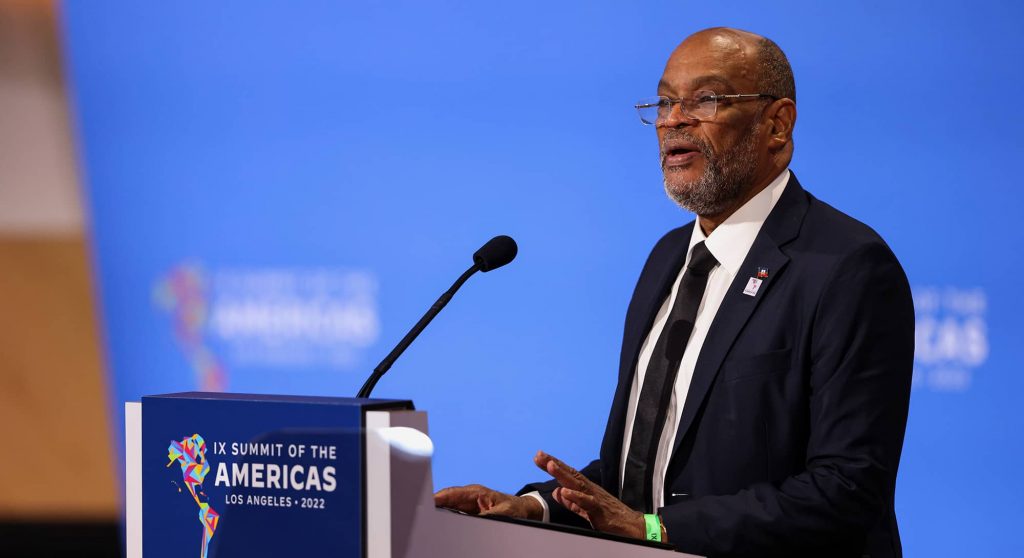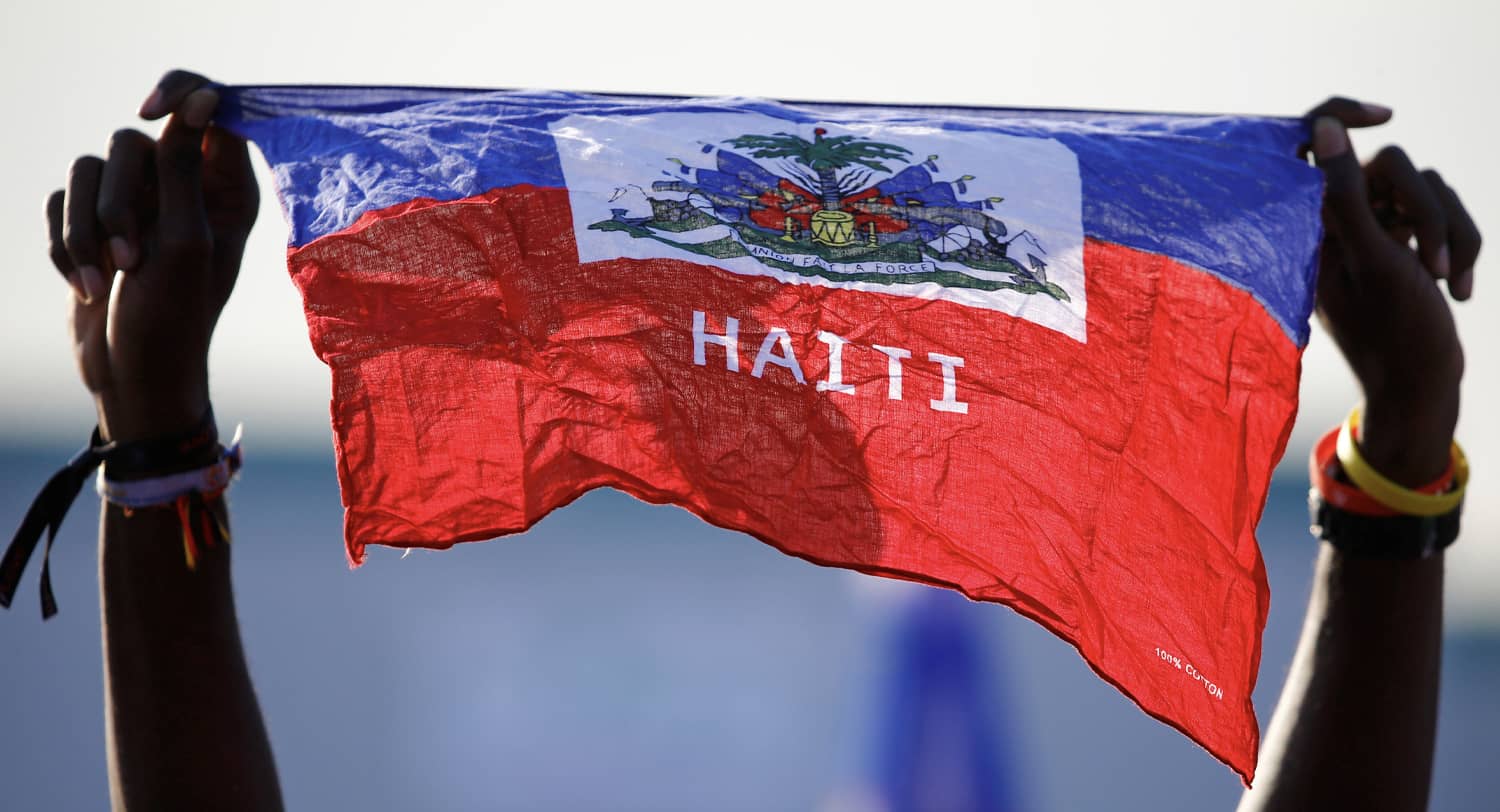Haiti has for decades been in a perfect storm of internal challenges – earthquakes, floods, poor governance and now a capital nearly overrun by gangs. The international response has often brought its own storms – including a cholera epidemic and sexual predation by UN peacekeepers.
Haitians are becoming increasingly desperate, while the international community is frozen with fear of involvement and lacks an architecture for dealing with fragility and state failure on this scale. The defining international approach to fragile states at present is non-involvement.
But can a country of 11 million, suffering from increasing malnutrition, with citizens mounting anything that will float in an effort to leave, and now with gangs fast becoming warlords, really simply be left to find a “Haitian solution”?
Amid international drift, a coalition of Haitian actors from civil society, the business community, and political factions put forward a creative governing accord in December 2022 as a way to help the country reset. It may have the right mix of “Haitian-led solutions” and international involvement. But to succeed it will require a new generation of leadership in Haiti, and a more steadfast approach by a reticent international community.
The Long Road to Political Consolidation
Accounts of Haiti traditionally stress its position as the poorest country in the Western Hemisphere, with the lowest per capita income. More recently observers have considered an early history of isolation and a crushing debt burden demanded by its colonizer.
Haiti’s recent history revolves around intense personal leadership, from the crushing authoritarianism of the Duvaliers 1957 to 1986, to the erratic leadership of Jean-Bertrand Aristide, in and out of power 1991 to 2004. Missing throughout was a strong civil society, a capable state, and an organizing principle the country could rally around.
A series of post-Aristide leaders were inept at governing (apart from René Préval) allowing the country’s elites to barter for scraps of revenue in a country whose economic potential was barely touched.
In July 2022, the bottom of Haiti’s tenuous political arrangement fell out. President Jovenel Moïse, who had arbitrarily extended his mandate because of challenges in mounting an election, was assassinated by foreign mercenaries. The country went from a low functioning democracy to one where democratic institutions have disappeared. Haiti now is being governed by an unelected de facto president, Ariel Henry, with extremely limited popular support.

International Tools for Managing State Fragility
The international community has been a player in Haiti throughout, generally intervening in the face of crisis, with a desire to depart as soon as possible. A case like Haiti, that combines a need for governance, humanitarian assistance, and security, is what UN peacekeeping was created for. Though an imperfect tool, subject to short-term mandates, UN peacekeeping helped hold the country together as the slow process of political consolidation and institutional development continued.
Drastic cuts to US funding for UN peacekeeping in 2017 reduced the mission in Haiti to a level that hollowed out the extensive police advising and political guardrails the country required, leaving it to flounder. The architecture for progress, imperfect as it was, disappeared.
The US approach to managing state fragility, commonly defined as deficiency in governing authority, capacity, and legitimacy, has evolved. There was growing resentment on both sides of the political spectrum about the resources the US had poured into Iraq and Afghanistan. Intervention reached a low point in Libya, where a brutal but functional state that had given up its nuclear weapons program was deliberately collapsed, leading to a decade of civil war and adding to the refugee crisis that has destabilized Europe.
But the sentiment in the US to ignore state fragility was not shared by all. Key members of the Congress recognized that many issues – refugee flows, hunger, transnational crime, and terrorism — were the result of state fragility, and a world of higher functioning states would provide a more effective architecture for managing these challenges than waiting for problems to accumulate and responding with drone strikes.
In 2019 Congress passed the Global Fragility Act. It calls for two major shifts in the US approach to fragility – first, the US must follow the lead of host country citizens, and second, it will develop long-term plans for harnessing all the tools of the US government in diplomacy, development, and the security sector, as it helps “build resilience, strengthen the roots of stability, and prevent conflict.”
Haiti as Test Case for a New Architecture
Haiti is one of the “pilot countries” for the Global Fragility Act, along with Libya, Mozambique and several others. There may be a narrow window for Haiti and its international partners to solve Haiti’s short-term crisis, and then undertake the longer-term recovery to finally escape the fragility trap.
This opportunity began on December 21, 2022 when a coalition of business, civil society and political actors quietly signed an accord with Haiti’s prime minister, Ariel Henry, that outlined a transitional arrangement leading to elections.
The accord calls for a three-member High Council of Transition (HCT) to be selected from civil society, political leaders, and the private sector. The current HCT was installed on February 7 and could be expanded as needed. It will advise the prime minister based on the results of extensive roundtables, a kind of national dialogue that channels Haitians’ opinions and mobilizes expertise. These roundtables will require a tremendous amount of support to function. But their success could shift the country’s power structure in an entirely new, citizen-led direction. The HCT will also be responsible for ensuring electoral integrity, and making provisions for an interim legislature to oversee governments budgets, management, and transparency.
Four things are required for this arrangement to work.
First, an urgent infusion of security is required to prevent gangs from becoming omnipotent warlords.
As part of the December 21 accord, the first roundtable will be on security, identifying the requirements for restoring essential safety to the country. Until now, security was handled either by the international community singlehandedly, or Haiti was left to manage on its own. December 21 takes a hybrid approach, in which Haitian experts and civil society, in conjunction with outside technical experts, develop a security plan that will be supported by international partners.
Security assistance could include any of the following: training thousands of Haitian recruits and leaders offshore, building intelligence capacity with use of drones and other technical capabilities, engaging gangs to better understand their price for involvement in the national project (and avoiding intense urban combat), and organizing a system of community justice and security dialogues that ensures the involvement of Haitians.

Second, as I have written elsewhere, failed and fragile states require a political compact that unites citizens. Absent a galvanizing sense of belonging that transcends tribe, region, or personal interest, citizens will not offer their vital support to the project of building their nation.
As professor Heather Salma Gregg puts it, our recent efforts in helping fragile states have missed a “critical, necessary component of a viable state: the emotional attachment citizens feel towards one another and to their state.” States, she writes, “are not just structural, rational, utilitarian entities; they also provide a sense of identity, purpose and destiny among their own people.”
This is not an easy or rapid process, and the role of foreigners in facilitating it is fraught with pitfalls, but skillful outsiders have helped assist such a process in other countries. Through its roundtables, the December 21 accord could provide, for the first time, a means for Haitians to develop this sense of national unity.
Third, state institutions need to be strengthened in order to improve the lives of Haitians. The late Dr. Paul Farmer, who was involved in public health in Haiti for decades, frequently lamented the fact that the public sector is traditionally ignored in Haiti as government and private sector donors flock to help. He noted that after the 2010 earthquake only one percent of US assistance was channeled through state institutions. Policymakers undoubtedly were fearful of corruption and were always in a hurry to deliver, and some came with a private sector bias. But in the end, it has left Haiti without functional state institutions.
Fourth, the effort will need to be long-term. The US stuck with Colombia through decades of struggle to bring its internal conflict to a successful conclusion, a project that remains unfinished, and a similar long-term approach should be taken with Haiti. It has been subject to a series of six-month UN mandates since the fall of the Duvalier regime in 1986. It now needs fulfillment of the Global Fragility Act’s promise of a ten-year plan, not ten one-year plans. And amidst this effort, the temptation to take over or lose interest must be avoided. There is an element of empathy and patience that goes along with the best peacebuilders and stabilizers. It is a rare quality, but those who come to Haiti will need both in rich supply.
With the December 21 accords, and the Global Fragility Act of the Congress, the international community may have the right architecture for Haiti. But it will require security assistance and diplomatic and political support over an extended period of time to make it work.
One could have picked an easier case than Haiti to test this new architecture for assisting fragile states, but here we are. We should not let the opportunity slip away.

